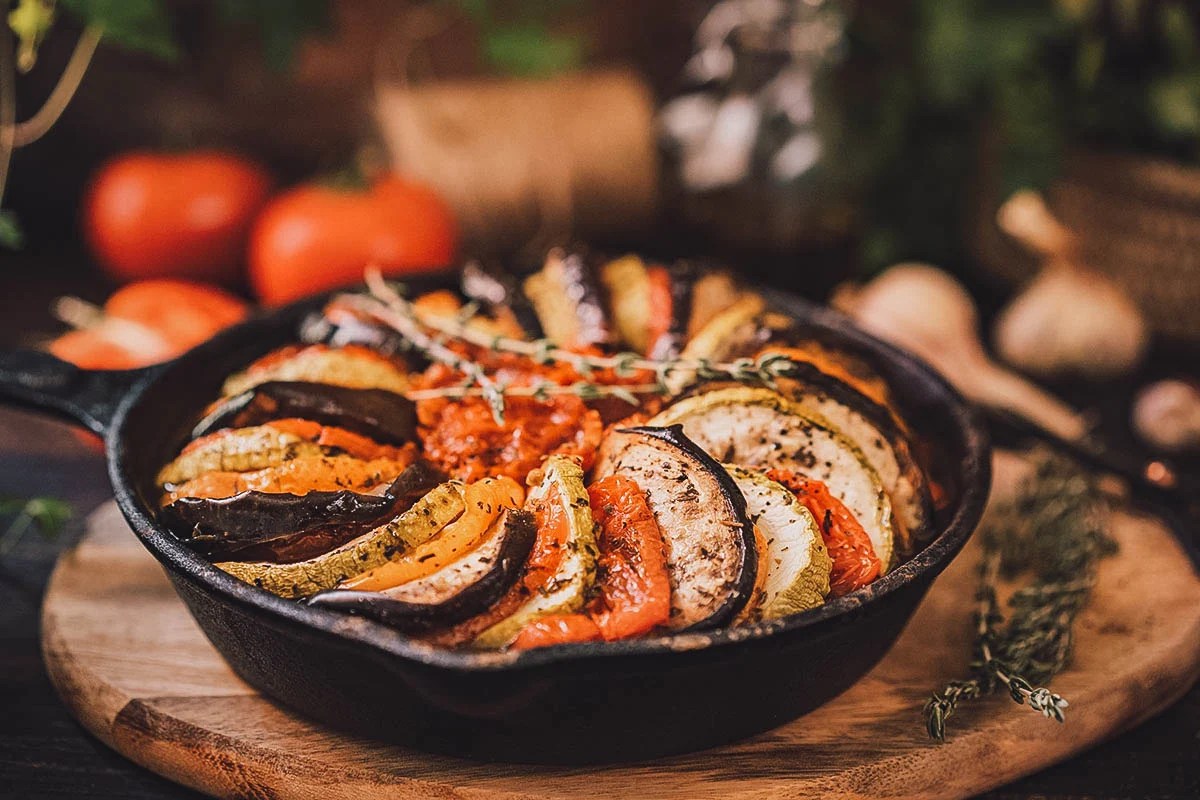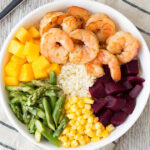Indulge in the rich tapestry of French gastronomy without compromising your heart health! This guide unveils the secrets to transforming classic French dishes into heart-healthy masterpieces. We’ll explore innovative cooking techniques, ingredient swaps, and delectable recipe adaptations that showcase the vibrant flavors of France while prioritizing your well-being. Prepare to embark on a culinary journey where deliciousness and health meet in perfect harmony.
From mastering the art of creating lighter sauces to selecting heart-healthy ingredients and crafting balanced meal plans, we’ll equip you with the knowledge and inspiration to enjoy the best of both worlds. Discover how simple substitutions and mindful cooking methods can elevate your French culinary experience, creating dishes that are both satisfying and supportive of a healthy lifestyle. Get ready to savor the exquisite taste of France, guilt-free.
Building a Heart-Healthy French Meal Plan

Embracing a heart-healthy lifestyle doesn’t mean sacrificing the rich flavors and culinary artistry of French cuisine. By making mindful substitutions and focusing on portion control, you can enjoy the best of both worlds—delicious French food and a healthy heart. This section details a sample seven-day meal plan, explores the importance of mindful eating, and addresses potential challenges in adapting traditional recipes.
A Sample Seven-Day Heart-Healthy French Meal Plan
This plan showcases the versatility of French cuisine in creating heart-healthy meals. Each dish is designed to be flavorful and satisfying while minimizing saturated fat, sodium, and cholesterol. Portion sizes are approximate and can be adjusted based on individual caloric needs. Nutritional information is estimated and may vary based on specific ingredients and preparation methods.
| Day | Meal | Dish | Nutritional Information (Approximate) |
|---|---|---|---|
| Monday | Breakfast | Bircher muesli with berries and a sprinkle of almonds (1 cup) | ~300 calories, high in fiber, antioxidants, and healthy fats |
| Monday | Lunch | Lentil soup with a side of whole-wheat bread (1.5 cups soup, 1 slice bread) | ~400 calories, high in protein and fiber, low in fat |
| Monday | Dinner | Grilled salmon with steamed asparagus and a small portion of quinoa (4oz salmon, 1 cup asparagus, ½ cup quinoa) | ~500 calories, rich in omega-3 fatty acids, protein, and fiber |
| Tuesday | Breakfast | Yogurt with fruit and a drizzle of honey (1 cup yogurt, ½ cup fruit) | ~250 calories, high in calcium and probiotics |
| Tuesday | Lunch | Salad Niçoise with a light vinaigrette (2 cups) | ~350 calories, rich in vegetables, protein, and healthy fats |
| Tuesday | Dinner | Chicken breast with ratatouille and brown rice (4oz chicken, 1.5 cups ratatouille, ½ cup brown rice) | ~450 calories, lean protein, high in fiber and vitamins |
| Wednesday | Breakfast | Oatmeal with berries and a sprinkle of nuts (1 cup) | ~350 calories, high in fiber and complex carbohydrates |
| Wednesday | Lunch | Turkey and avocado sandwich on whole-wheat bread (1 sandwich) | ~400 calories, lean protein, healthy fats, and fiber |
| Wednesday | Dinner | Baked cod with roasted vegetables (4oz cod, 1.5 cups vegetables) | ~400 calories, lean protein, rich in vitamins and minerals |
| Thursday | Breakfast | Scrambled eggs with spinach and whole-wheat toast (2 eggs, 1 cup spinach, 1 slice toast) | ~300 calories, high in protein |
| Thursday | Lunch | Leftover baked cod and roasted vegetables | ~400 calories |
| Thursday | Dinner | Lentil stew with a side of crusty whole-wheat bread (1.5 cups stew, 1 slice bread) | ~450 calories, high in fiber and protein |
| Friday | Breakfast | Greek yogurt with berries and a sprinkle of chia seeds (1 cup) | ~280 calories, high in protein and antioxidants |
| Friday | Lunch | Salad with grilled chicken or chickpeas (2 cups) | ~380 calories, high in protein and fiber |
| Friday | Dinner | Mushroom and vegetable crepe with a side of green salad (1 crepe, 1 cup salad) | ~420 calories, high in fiber and vitamins |
| Saturday | Breakfast | Whole-wheat pancakes with fruit and a small amount of maple syrup (2 pancakes, ½ cup fruit) | ~350 calories |
| Saturday | Lunch | Leftover mushroom and vegetable crepe and salad | ~420 calories |
| Saturday | Dinner | Chicken and vegetable stir-fry with brown rice (4oz chicken, 1.5 cups vegetables, ½ cup brown rice) | ~480 calories, lean protein, high in fiber and vitamins |
| Sunday | Breakfast | French toast made with whole-wheat bread and topped with berries (2 slices, ½ cup berries) | ~380 calories |
| Sunday | Lunch | Tuna salad sandwich on whole-wheat bread (1 sandwich) | ~400 calories, high in protein |
| Sunday | Dinner | Hearty vegetable soup with a side of whole-wheat bread (1.5 cups soup, 1 slice bread) | ~450 calories, high in fiber and vitamins |
The Importance of Portion Control and Mindful Eating
Maintaining a heart-healthy French diet hinges on both the quality and quantity of food consumed. Portion control is crucial for managing calorie intake and preventing weight gain, a significant risk factor for heart disease. Mindful eating, a practice that involves paying attention to the sensory experience of eating, enhances enjoyment and helps regulate portion sizes.
Mindful eating strategies include: eating slowly, savoring each bite, paying attention to hunger and fullness cues, and minimizing distractions while eating. For example, instead of rushing through a meal while watching television, one could sit down at a table, focus on the flavors and textures of the food, and eat at a slower pace. This allows the body to register fullness more effectively, preventing overeating.
Challenges in Adapting French Cuisine and Practical Solutions
Traditional French cuisine often features rich sauces, butter, and cheeses, which can be high in saturated fat and cholesterol. Adapting these recipes requires mindful substitutions and adjustments.
One challenge is reducing the use of butter and cream in sauces. Solutions include substituting with low-fat alternatives like Greek yogurt or using vegetable broth to create lighter sauces. Another challenge is managing sodium intake, often high in processed French foods. Reading food labels carefully and opting for fresh, minimally processed ingredients can help. Finally, many classic French dishes are high in calories. Portion control, along with incorporating more vegetables and lean protein sources, are crucial in managing calorie intake. For example, instead of a large serving of a creamy pasta dish, one could opt for a smaller portion or pair it with a large salad to balance the meal.
Step-by-Step Guide to a Specific Heart-Healthy French Recipe
This recipe for Chicken Provençal offers a vibrant and flavorful taste of the French Riviera while prioritizing heart-healthy ingredients and cooking methods. By using lean chicken breast, plenty of vegetables, and minimizing added fats, we create a dish that is both delicious and beneficial for cardiovascular health. The bright colors and aromatic herbs will transport you to the sunny shores of Provence.
Ingredients
This section lists all the necessary ingredients for preparing our heart-healthy Chicken Provençal. Accurate measurements are crucial for achieving the desired taste and texture.
- 1.5 lbs boneless, skinless chicken breasts, cut into 1-inch cubes – The lean protein source provides essential amino acids without excess fat.
- 1 large onion, finely chopped – The onion adds a subtle sweetness and depth of flavor to the dish.
- 2 cloves garlic, minced – Garlic contributes a pungent aroma and a hint of sharpness.
- 1 red bell pepper, seeded and diced – Provides a sweet crunch and a beautiful color contrast.
- 1 yellow bell pepper, seeded and diced – Adds more sweetness and vibrant color to the dish.
- 1 (14.5 ounce) can diced tomatoes, undrained – The tomatoes provide acidity and a rich tomato base for the sauce.
- 1/2 cup dry white wine (optional, can substitute with chicken broth) – Adds depth of flavor; choose a dry wine for less sugar.
- 1/4 cup chopped fresh basil – The basil contributes a bright, herbaceous note.
- 1/4 cup chopped fresh oregano – Adds an earthy, slightly bitter counterpoint to the basil.
- 2 tablespoons olive oil – A healthy fat used sparingly for sautéing.
- Salt and freshly ground black pepper to taste – Seasoning enhances the overall flavor profile.
Equipment
The proper equipment ensures efficient and safe preparation of the Chicken Provençal. Having everything ready beforehand streamlines the cooking process.
- Large skillet or Dutch oven – Provides ample space for sautéing and simmering.
- Cutting board – A clean surface for preparing the vegetables and chicken.
- Sharp knife – For precise chopping and dicing.
- Wooden spoon or spatula – For stirring and mixing the ingredients.
Preparation Steps
This section details the step-by-step process of making Chicken Provençal, emphasizing visual cues and textural changes at each stage.
- Sautéing the Aromatics: Begin by heating the olive oil in the skillet over medium heat. Add the chopped onion and cook until softened and translucent, about 5 minutes. The onions will transform from opaque white to a semi-transparent, golden hue. Then, add the minced garlic and cook for another minute until fragrant, noting the garlic’s transition from pale white to a light golden brown.
- Adding the Vegetables: Stir in the diced bell peppers. Cook for 5-7 minutes, until slightly softened but still retaining some bite. The peppers will brighten in color and slightly soften, but will not become mushy.
- Browning the Chicken: Add the cubed chicken to the skillet. Cook, stirring occasionally, until lightly browned on all sides. The chicken will turn from pale pink to a lightly browned exterior, indicating it’s starting to cook through.
- Simmering the Sauce: Pour in the canned diced tomatoes (undrained) and white wine (or chicken broth). Bring to a simmer, then reduce the heat to low, cover, and cook for 15-20 minutes, or until the chicken is cooked through and the sauce has thickened slightly. The sauce will transition from a chunky consistency to a smoother, slightly reduced sauce, the colors deepening and blending harmoniously.
- Finishing Touches: Stir in the fresh basil and oregano. Season with salt and pepper to taste. The herbs will release their aromas, infusing the sauce with a fresh, vibrant fragrance. The finished dish should have a rich, slightly tangy tomato sauce clinging to tender chicken and vibrant vegetables.
Nutritional Information (per serving, approximate)
This table provides an estimate of the nutritional content per serving. Note that values may vary based on specific ingredients and portion sizes.
| Nutrient | Amount |
|---|---|
| Calories | 250-300 |
| Protein (g) | 30-35 |
| Fat (g) | 8-10 |
| Carbohydrates (g) | 15-20 |
| Fiber (g) | 4-5 |
Transforming French cuisine into a heart-healthy delight is not only achievable but incredibly rewarding. By embracing innovative cooking techniques, mindful ingredient choices, and creative recipe adaptations, you can enjoy the rich flavors of France without compromise. This guide has equipped you with the tools to create a vibrant and delicious culinary experience that nourishes both your body and soul. So, don your apron, gather your ingredients, and embark on this exciting culinary adventure! Bon appétit!
FAQ
Can I still enjoy French pastries on a heart-healthy diet?
Absolutely! By using healthier fats like olive oil and reducing refined sugar, you can create lighter, healthier versions of classic French pastries without sacrificing taste.
Are there any specific French cheeses that are lower in fat?
Yes, options like chèvre (goat cheese), certain types of feta, and some lighter varieties of brie offer lower fat content compared to richer cheeses like Camembert or Comté. Always check nutritional labels.
How can I manage portion sizes effectively when eating French food?
Practice mindful eating by savoring each bite, paying attention to your body’s fullness cues, and using smaller plates. Consider sharing dishes or taking leftovers home to control portion sizes.
What are some common pitfalls to avoid when adapting French recipes?
Overcompensating for fat reduction with excessive salt or sugar is a common mistake. Focus on enhancing flavors with herbs, spices, and citrus instead.


